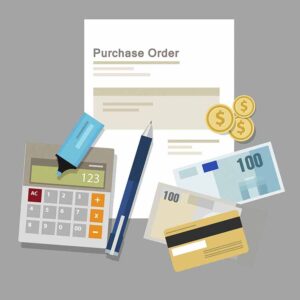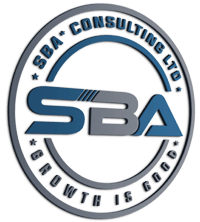Purchase Orders
 Purchase Orders serve multiple functions in your company. Yes, they are your request for merchandise or services from your vendor. Yes, they set quantity and price expectations or contractual amounts. Yes, they show when you want delivery and the FOB and Terms you agree to pay with in.
Purchase Orders serve multiple functions in your company. Yes, they are your request for merchandise or services from your vendor. Yes, they set quantity and price expectations or contractual amounts. Yes, they show when you want delivery and the FOB and Terms you agree to pay with in.
Wait a second.
You will note four key terms. Amounts, Delivery Dates, FOB and Terms. These terms are crucial aspects of your Cash Flow Management and runway calculation.
Obviously “Amounts” is clear. The aggregate of the amounts (line items) will give you a total. Depending on what, where or how you are purchasing, there may be other landed costs (freight and duty). Let’s assume they are on the PO.
So, you now know the approximate (estimate) value you will owe.
FOB is an extremely important item. It dictates when the shipment’s title transfers to you, the buyer. For cash flow purposes, it is when the clock starts on the payment cycle. If your supplier gives you 30-day terms, and your contract is FOB Shipping Point (title transfers when they ship), your 30-day window also includes the transit time.
If you source your purchase from the Far East, transit time by ship is about 30 days. You’ll have to pay for the goods before or around the date of receipt. This is an impact on your cash flow.
Cash Flow
 When you calculate your future cash flow, you use actual sales, estimated sales, actual account payables and estimated expenses. Most expenses (both fixed and variable) are easy to identify as monthly expenses. Rent, utilities, payroll. The amounts may change, but you should have a good idea of the values.
When you calculate your future cash flow, you use actual sales, estimated sales, actual account payables and estimated expenses. Most expenses (both fixed and variable) are easy to identify as monthly expenses. Rent, utilities, payroll. The amounts may change, but you should have a good idea of the values.
Purchasing inventory or other large value items may not be as clear. Using purchase orders that aggregate same delivery dates, FOB and terms per vendor can make the calculation of payment easier.
A great cash management system should be able to read directly from your accounting system both sales and purchase, sales orders, and purchase orders. It should be able to subtract both SO and PO from estimated amounts. This will eliminate double-dipping and should the SO or PO values exceed the estimates, the cash flow will change.
At month’s end, all estimates for that month get voided, giving you an accurate picture of what happened. It is at this time that your Cash Flow Statement and Statement of Cash Flows will be in sync.
Why not schedule a brief call with SBA * Consulting.
